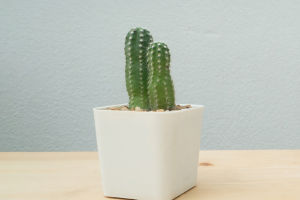Daffodils, known for their vibrant yellow blooms and delicate petals, are a favorite among flower enthusiasts.
Traditionally grown in soil, daffodils can also be cultivated using hydroponics, a method that allows plants to thrive without soil, relying on a nutrient-rich water solution instead.
This approach offers several benefits, such as faster growth, improved flower quality, and the ability to cultivate daffodils year-round. Here's a guide on how to grow daffodils using hydroponics.
1. Selecting Daffodil Bulbs for Hydroponics
The first step in hydroponic cultivation is selecting the right daffodil bulbs. Choose healthy, large, and firm bulbs, as they contain enough stored energy to support growth in a soilless environment. Avoid bulbs that are soft, shriveled, or have visible mold, as they may not thrive in hydroponic conditions.
Some daffodil varieties, such as ‘Paperwhite’ and ‘Dutch Master,’ are particularly suited for indoor hydroponic cultivation due to their adaptability and strong bloom performance.
2. Setting Up the Hydroponic System
A simple hydroponic setup is sufficient for growing daffodils. One of the most popular systems for bulb cultivation is the water culture system, which consists of a container filled with water and a support structure to hold the bulbs above the waterline.
Containers: Use a shallow, transparent container with no drainage holes. Glass or plastic jars work well as they allow you to monitor the water level and root development.
Support Structure: A layer of decorative pebbles, marbles, or glass beads can be placed at the bottom of the container to provide stability for the bulbs. This layer should be deep enough to support the bulb without submerging it completely.
3. Preparing the Bulbs for Hydroponics
Before planting, inspect and clean the bulbs to remove any soil residues. Rinse them gently with water to ensure they are free of pests and diseases. If desired, soak the bulbs in lukewarm water for a few hours to kickstart the rooting process.
4. Planting the Bulbs
To plant daffodil bulbs in a hydroponic system:
Place a layer of pebbles or marbles in the bottom of the container.
Position the bulbs on top of this layer with the pointed end facing upward. Ensure the bulbs are secure but not completely submerged in water.
Fill the container with enough water to just touch the bottom of the bulbs. This encourages root growth while preventing the bulbs from rotting.
5. Providing Nutrients and Care
In hydroponics, plants rely on nutrient solutions instead of soil. After the bulbs develop roots (usually after a few weeks), add a diluted, balanced liquid fertilizer to the water.
A fertilizer with an equal ratio of nitrogen, phosphorus, and potassium (e.g., 10-10-10) is ideal for promoting healthy foliage and flower development. Make sure to follow the manufacturer’s instructions for dilution, as over-fertilizing can damage the roots.
Water Level: Maintain the water level just below the base of the bulbs to avoid bulb rot. As the roots grow, adjust the water level to ensure they remain submerged while the bulbs stay dry.
Light: If growing indoors, consider using grow lights to provide the necessary light intensity for healthy growth.
6. Monitoring Growth and Flowering
Daffodils grown hydroponically typically bloom within 4-8 weeks, depending on the variety and growing conditions.
Regularly check the water level and add more water or nutrient solution as needed. If algae start to form on the container or water surface, clean the container and replace the water to maintain a healthy growing environment.
Hydroponic cultivation is a convenient and efficient method for growing daffodils, offering the flexibility to enjoy their beautiful blooms year-round.
By selecting healthy bulbs, setting up a simple hydroponic system, and providing proper nutrients and light, you can successfully grow vibrant daffodils indoors. With this method, you'll have a stunning display of flowers to brighten up any space.


